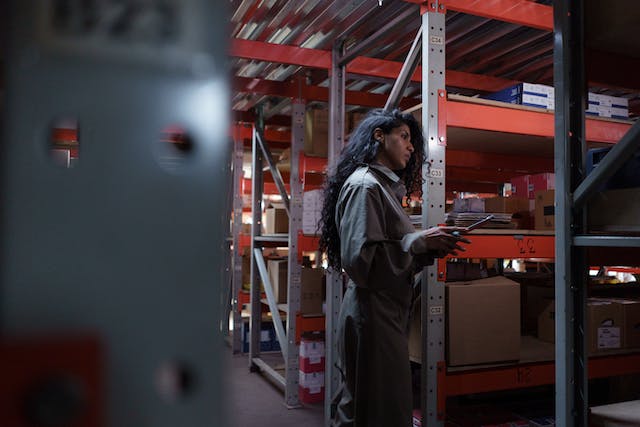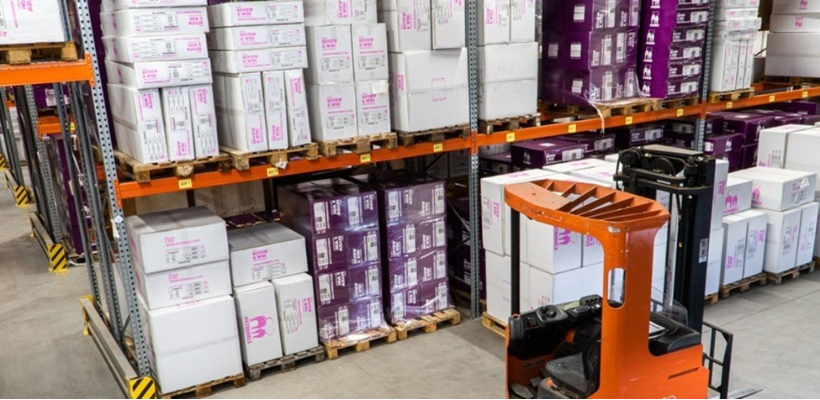Your store's products may occasionally run out of stock. If you know how to handle it, having sold-out items on your Shopify site shouldn't be much of an issue. When an item is out of stock, many Shopify store owners either take no action at all or just remove it from their store. But is it the best way to handle this? Surely not.
There are better ways to go about this like pre-order on Shopify. We wrote this post to offer some advice on how to deal with out-of-stock merchandise. No store should ever lose a sale because their product runs out of stock.
Why do products run out of stock?
When a Shopify store runs out of a particular item or product that customers want to purchase, it is known as an out-of-stock (aka. OOS) product. There are several causes for this:
1. Your demand is higher than the supply
The most obvious reason why products run out of stock is that the demand for them exceeds the supply. This can occur due to a sudden spike in popularity or a failure to accurately predict consumer demand. When businesses don’t have enough stock to meet the demand, it can be frustrating for both the customers and the business itself. The business may lose potential sales and customer trust, and customers may turn to competitors for the product they need.
2. Your supplier has issues
Out-of-stock products can happen as a result of problems with suppliers, Problem consist of poor product quality, refusal to accept orders, or inability to deliver items on schedule.
Numerous factors, such as supplier insolvency, production issues, or modifications to the supplier's business plan, may cause this. Running out of stock can be avoided by keeping solid ties with suppliers and making sure they can deliver your Shopify products on schedule.
3. Unpredictable events happen
Unfortunate events like earthquakes, floods, hurricanes, etc. especially in locations that are less prepared for it cause supply chain disruptions. We’ve seen first-hand during the COVID-19 pandemic how an unpredictable event can affect supply chain issues even for the biggest manufacturers, distributors, and sellers. In fact, even 2% of the Shopify stores were NOT affected by the pandemic according to Ernst & Young.
4. You can’t forecast your inventory
Running out of stock can happen if the forecasting technique is at fault, if customer behavior shifts, or if there is not enough information to create a reliable forecast.
Having a back-in-stock Shopify app is a key factor in your inventory forecast process. By asking your customers to enter their contact information in your Shopify store, you can find how much demand your product has and you can plan for the future.
Enhancing the precision of demand forecasting aids in averting stock-outs and guarantees that an adequate quantity of inventory is accessible to satisfy consumer demands.
5. Your warehouse is small compared to your business
Due to a shortage of warehouse space, a business cannot keep enough inventory on hand to satisfy client demand. This may happen if a business expands quickly, if a product's demand increases unexpectedly, or if the business has effective space planning and management procedures.
Make sure there is enough warehouse space for stock to fulfill demand. If extra space is required, you can increase space usage or buy more effective storage options.
6. You can’t create enough products
Stock-outs can result from production problems if goods are not manufactured in a timely manner or are of poor quality preventing them from selling. This could happen as a result of problems including equipment failures, power outages, a lack of raw materials, or sluggish production.
Stock-outs can be avoided by ensuring that production procedures are effective and dependable. This may entail making investments in new machinery, streamlining production procedures, and putting emergency plans in place to deal with unforeseen circumstances.


Source: Pexels
How to avoid your products selling out
Now that you know how this issue occurs, here are some of our suggestions on how to avoid it:
1. Plan ahead and forecast demand
The first step to avoiding product sell-outs is to plan ahead and forecast demand. This means having a good understanding of your target market, their buying behavior, and any external factors that may impact demand. Study your sales data from previous launches, keep an eye on industry trends, and listen to feedback from your customers. This will help you make informed decisions about how much inventory to produce for your next product launch.
2. Utilize a pre-order button
If you have a loyal customer base who eagerly awaits your product launches, consider setting up a pre-order button on the Shopify store. This allows customers to reserve and pay for their products in advance, giving you a better understanding of the demand for your product. It also allows you to accurately gauge the amount of inventory that needs to be produced, reducing the risk of overselling and selling out.
3. Consider a restock alerts widget
In cases where your product does sell out, having a restock alerts in place can be beneficial. This allows customers to still place an order for your product but with longer waiting times. While it may not be an ideal situation, it still gives customers the opportunity to purchase your product and can help prevent the loss of sales.
4. Have a strong supply chain and production process
Often, the reason for product sell-outs is due to issues within the supply chain or production process. Delays in materials, production errors, or shipping mishaps can all result in a delay in the release of your product or even a shortage of stock. To avoid this, ensure that your supply chain is strong and reliable and that your production process is efficient and well-managed.
5. Implement limited quantities for each customer
One way to prevent one customer from purchasing a large number of your products, leaving others with none, is to implement a limit on the number of products each customer can purchase. Not only does this help to ensure fairness for all customers, but it also helps to spread out demand and prevent your products from selling out too quickly.

Source: Pexels
Best ways to handle out-of-stock products on Shopify
You saw how much impact running out of stock can have on your Shopify store. But most times it’s not a matter of avoiding it, but rather building on it and making a revenue from your products even when they’re not available anymore.
1. Offer Pre-Order on your Shopify store
Pre-orders are a potent sales strategy because of various reasons. By converting a potential lost sale because a product is out of stock into a purchase, pre-orders help you grow your business and improve your branding and relations with your customers. They allow customers to experience the age-old excitement of awaiting the arrival of their new favorite product—your product—at their doorstep, and they assist your business in gaining the clarity and visibility you need to better estimate revenue and predict demand.
Shopify Pre-orders are a fun buying option that you can provide in your store right away thanks to Shopify's simple pre-order enablement process. To help you stop waiting and start selling, there are various Shopify apps such as Notify Me! Back in stock and PreOrder have helped more than 10,000 Shopify stores make a huge revenue from selling their out-of-stock products.
Notify Me, allows merchants to automate and schedule pre-orders with discounts and delivery notes based on stock levels of your inventory. You can secure your payment by offering enticing discounts on upcoming products to expect more revenue streams.
Moreover, It provides helpful features like pre-order discounts, automatic fulfillment, and order tracking. Apart from pre-orders, it has a waitlist feature that allows customers to sign up and be notified when the item they want is back-in-stock.
Pros and Cons of Shopify Pre-orders:
Let’s go over to see if your Shopify store should be using Pre-orders according to these points.
Pros:
They help your Shopify store generate revenue
When it comes to purchasing, customers have more options than ever before. With only a few taps, consumers can now access any product, from high-end luxury items and technology to one-of-a-kind handmade crafts, the world is now at their fingertips thanks to e-commerce.
This implies that there has never been more rivalry for merchants. When customers desire your product and it's not available or out of stock, they will just go to the next store.
You have an advantage with Shopify pre-orders since you can guarantee more sales whether the product is prepared for shipment or not. Now that you're prepared to sell when a consumer is ready to buy, you can never say "no" to them again (even if you're not ready to ship).
Pre-orders help you anticipate demand and forecast restocking
Pre-orders on Shopify give stores reliable evidence about tangible demand, which helps transform uncertainty into insights.
Selling physical goods carries dangers by nature. Retailers have a significant financial stake in knowing the precise level of demand for any product they sell, regardless of whether they have made investments in the design, development, and production of their products or have only bought inventories.
Cons:
Your production may face limits
Pre-ordering and product scarcity typically go hand in hand. This implies that there is fierce competition and a limited time frame in which to get the goods you require. You may experience problems that negatively impact your bottom line if you rely too much on Shopify pre-orders or publicize things too soon.

Source: Pexels
You rely on your suppliers for your preorders
You have no control over the things you pre-order on Shopify; this is not like inventory that you store in your own warehouse. You have few options if there are problems with production, longer lead times, or other problems. In the event that your provider struggles with communication, this could get worse. To reduce blind spots while ordering, stick with reliable suppliers and select the best multichannel order management software for your company.
💡 Quick read: 10 Best Shopify Orders Fulfillment Apps

2. Create back-in-stock widgets on your Shopify store
Another effective way to handle out-of-stock products is by adding back-in-stock widgets on your Shopify store. These widgets allow customers to sign up for a notification when a product is back in stock. This way, you can keep your customers informed and engaged while giving them the opportunity to purchase the product as soon as it becomes available.
Customers can register for stock alerts via web push notification, email, or text message (SMS) on sold-out products with Shopify's Back in Stock functionality. Keep in mind that the back-in-stock functionality is not offered in Shopify’s basic products and you need a restock alert app to work.
Customers will be able to return to your website and finish their purchase when they are informed that you have replenished these products.
When using the Back in Stock function, many retailers see it as a chance to regain lost sales and keep up improved client relations.
To create back-in-stock widgets, you can use restock alerts apps. These apps enable you to add a pop-up or a button to your product pages, allowing customers to enter their email addresses to receive a notification when the product is back in stock. This not only helps you to manage your inventory more efficiently but also creates a sense of urgency and exclusivity for your customers, leading to higher conversion rates.
Pros and Cons of Shopify back in stock messages:
Let’s go over to see if your Shopify store should be using Back-in-stock widgets according to these points.
Pros:
It reduces your churn rate
The pace at which customers discontinue using your brand is known as customer churn. It might be stated more plainly as the percentage of customers who stop actually being customers on your Shopify store.
The lifetime value (LTV) of your customers is negatively impacted by a high churn rate, like the one most retailers saw in 2020 during the COVID-19 pandemic.
Fortunately, Shopify back-in-stock messages encourage shoppers to visit your business again later, which lowers churn. In other words, customers are less inclined to abandon their purchase or shop at a different store.
It grows your email list
The fact that using restock notifications helps you expand your brand's email marketing may be their most underappreciated advantage in your Shopify store.
When a user on your Shopify store chooses to receive back-in-stock alerts, your business has their consent to contact them in the future (even if it's not about the unavailable item). As a result, you can appear in that person's inbox among emails from their loved ones, friends, and other brands.
It increases the conversion rate
Back-in-stock messaging gives customers a method to find out when those products are back in stock so they don't have to leave your website completely in the event of a stockout. And it makes it simpler to offer incentives for those people to return and buy anything later.
With the help of these notifications, you may keep selling out-of-stock goods while gaining more steady revenue streams in the long run.
These Shopify store visitors are additionally seeking your emails. Additionally, as they wait for that email, you can pitch them on additional things. They might return for something different even if they don't get what they sought at first.
Cons:
You can't keep up with back in stock request
Whether you like it or not, rapid satisfaction is what today's consumers want most. But when your products are out of stock (and you can't keep up with demand from customers), you won't be able to experience that sense of fulfillment. Even worse, you should anticipate a decline in client satisfaction.
In Shopify eCommerce, satisfying client demand. It forms the basis of a satisfying customer experience and fosters brand loyalty in your target market.
3. Offer subscriptions to your customers
Subscriptions are a transformative and efficient way to manage your Shopify store's product availability issues. This innovative approach can revolutionize your business. One method to streamline this process is by integrating to subscription manager apps like Subify, Subscription|Membership, or Yotpo subscriptions. These apps allow you to manage subscriptions, helping customers easily receive their favorite products in a hassle-free and automated manner. This feature ensures that customers always have their desired products delivered at regular intervals, providing convenience and satisfaction. It enhances the shopping experience and brings numerous benefits to your store, driving its success and prosperity.
Pros:
- Increase in Retention Rate and Decrease in Churn: Offering subscriptions via Subify can enhance customer retention rates. Customers who subscribe to a product are likely to come back for more, ensuring a continuous relationship. This approach reduces customer churn as the consistency and reliability of subscriptions keep the customers engaged and satisfied.
- Predictability of Sales: Subscriptions bring a certain level of predictability to your sales. Knowing that there is a definite number of products that are already sold (subscribed to) each month helps in forecasting and managing inventory better. It allows you to have a more strategic approach to ordering and stocking products, ensuring that you are neither overstocked nor understocked.
- Ease of Storage Process: Since the sales become more predictable with subscriptions, it helps streamline the storage process. You can maintain optimum inventory levels, making the storage process manageable and cost-effective.
How does Pre-order add value to your streamline?
When launch day finally comes around, a well-received pre-order campaign on Shopify will see a lot of interest in your product; yet, it's easy to underestimate how high demand might make all your preparations go to waste.
We have all been prepared with our mouse at the ready, only to get the dreadful 'No tickets available' notice 10 seconds after the tickets go on sale. Ticket sites are the ideal example of how overwhelming demand can lead to mayhem. How come? since the quantity of fans requesting tickets exceeds the supply. Or, even worse, the ticket website breaks because it can't handle the volume of traffic as you're entering your credit card information. To ensure that your launch goes well, you must be ready for anything.
Forecasting inventory with Shopify Pre-order
Starting to accept pre-orders four to six months before the introduction of your product is regarded as best practice. That being said, you must make the best decisions for your business and yourself by ensuring that you are not taking on more than you can handle. You don't want to end up in a situation like Sony did, when people were left without anything on launch day and the company was compelled to issue an apology on social media.
Explore more, check out this:












![27 Best Shopify General Stores + Complete Strategy Guide [2025]](http://pagefly.io/cdn/shop/articles/Best_Shopify_General_Stores_2f9d09f2-7c38-4da9-a495-e9f4898ddd68.jpg?v=1757271936&width=1640)





